I decided that I have to make some clamping cauls to protect my bent hoop before I can try to steam and bend it. The clamps have plastic covers on the tips. That is not going to work when the wood is hot because they will melt and wreck the wood. When I removed the plastic, I found this:
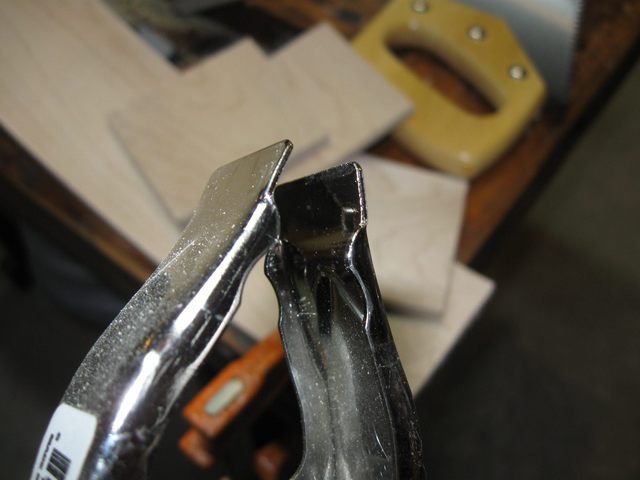
Jaggies On My Clamps
Those sharp jaggies are not going to do my hoop wood any favors. I need to protect the hoop from dents and scratches. So I need to have some cauls to put between them to protect the wood.
After I thought about it for a while, I realized that I could use that fractured board that was my first poor attempt at bending wood. Doing that has a couple of beneficial effects. One, it would make use of that piece of wood instead of just wasting it, and two, it would bury my mistake forever.
So I found the crooked board and clamped it to the bench.
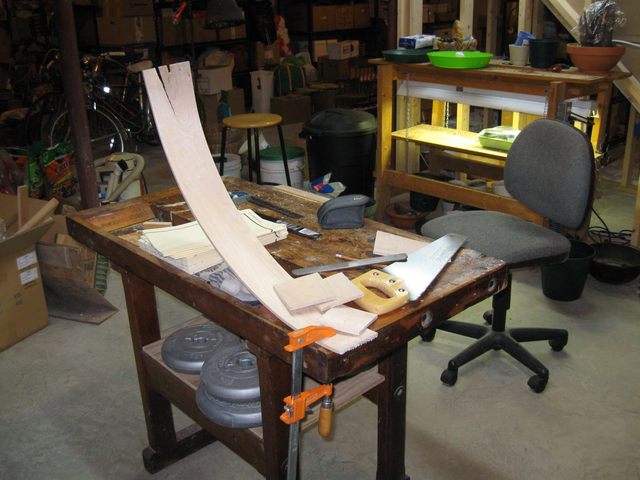
My First Poor Attempt at Bending Wood
About to Be Sacrificed for the Cause
I got out the utility saw and started sawing square pieces off the end of the board.
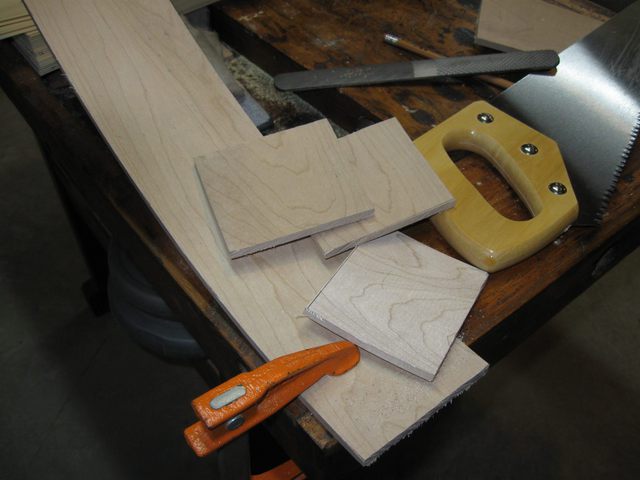
Square Cauls
The work was difficult because the saw kept binding in the kerf. When I looked at the saw, I realized that it had no "set" at all.
When a saw is set, its teeth are bent to one side or the other alternately so that every other tooth is bent the opposite direction as the one before it and the one after it. When the teeth cut through the wood, the kerf is made slightly wider than the thickness of the saw because the points of the teeth project past the sides of the blade. When the "set" is correct, the saw does not bind in the kerf. If the teeth are not set, then the kerf is the same size as the thickness of the blade and the sides of the saw scrape against the wood, causing it to bind.
I sharpen my own saws, so I have a sawset that I bought years ago to address this problem. The sawset is the thing in the photo below that looks like a pair of pliers.
I bought my sawset at Brookstone® in the 1980's when they were a place that sold hard-to-find tools. Remember those days? They had really neat stuff like chicken pluckers and hammers and stuff. Don't go there looking for a sawset now; all they carry now is YUPPIE toys.
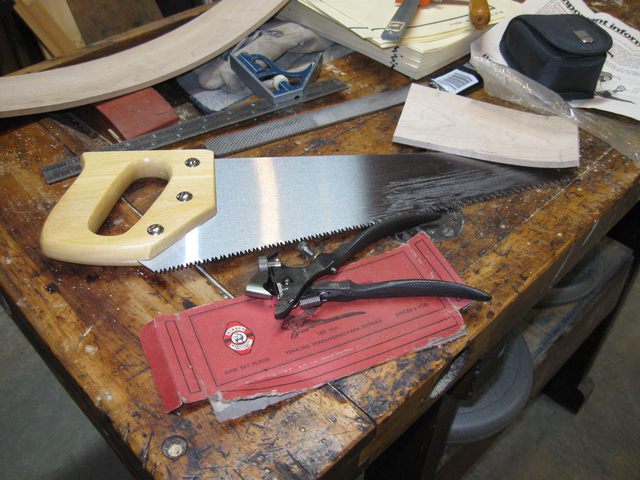
My Sawset
Here is a closeup of the tool.
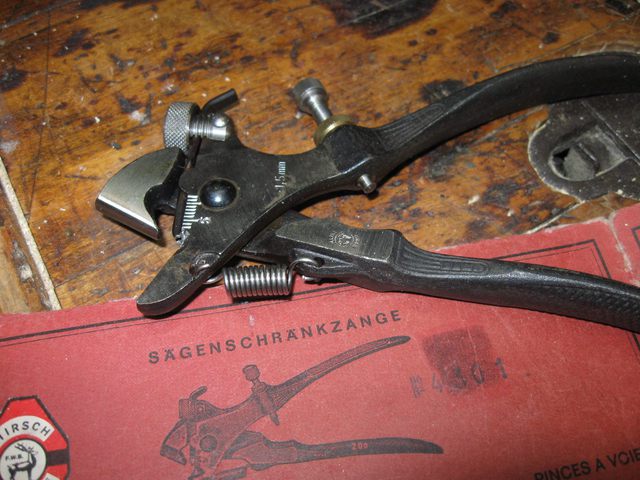
Closeup
Pretty, huh? The box says "sägenschränkzange" on it, but Google can't seem to find a translation for the word. When I searched for the word on the web, I found this exact tool for sale on Ebay..... with everything in German. Here is what it says:
Mit Hilfe dieser Sägenschränkzange werden die Sägezähne eines Sägeblattes
abwechselnd zur Seite gebogen, so dass ein breiterer Schnitt entsteht, als wenn
sie gerade wären. Damit wird das Verkanten bei der Arbeit verhindert.
Google translated this for me into:
Using this, the saw teeth of a saw blade Sägenschränkzange are bent alternately
to one side, the result is that a wider section than if they were straight. So
that tilting is prevented at work.
Fairly clumsy translation, but essentially correct.
Each tooth of the saw goes on that lower jaw, and when I squeeze the handles, the upper jaw forces the base of the tooth into the notch, bending the tip of the tooth up by a measured amount. You can kind of see what is going on in the photo below, but it is a rather confusing photo because of all the reflections.
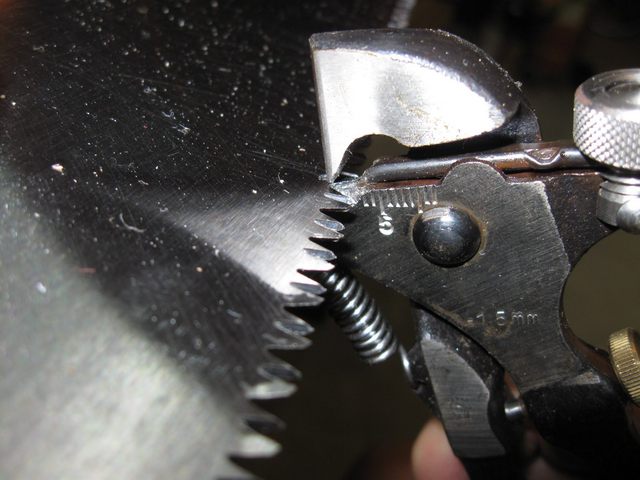
Setting Alternate Teeth
If you squint and look real hard at it and give me the benefit of the doubt, you might be able to see that every other tooth has been bent up very slightly. After I bent every other tooth up, I turned the saw over and bent the other alternate teeth up, thus making the teeth alternate up and down. Here is a farther away view that might make it more clear.
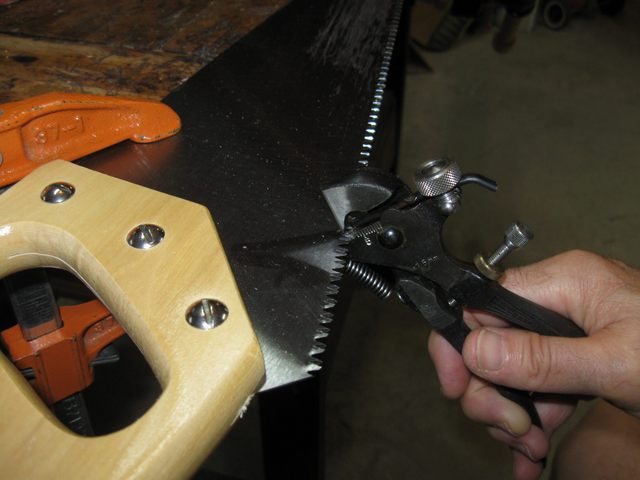
Setting the Teeth
That did the trick. The saw cuts better now. You can see below that I have cut the entire board into squares except for that last split part, which is pretty useless. If I throw that last bit into the fire, all of the evidence will be erased. Cool.
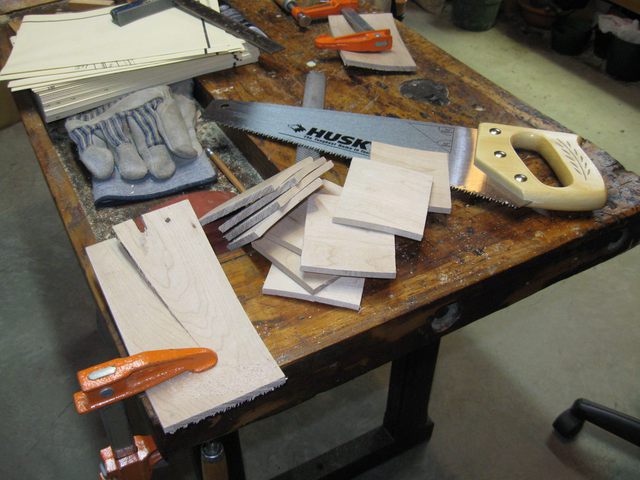
Just the End Bit is Left
I didn't get much done today, but some progress is better than no progress, n'est-ce pas?
